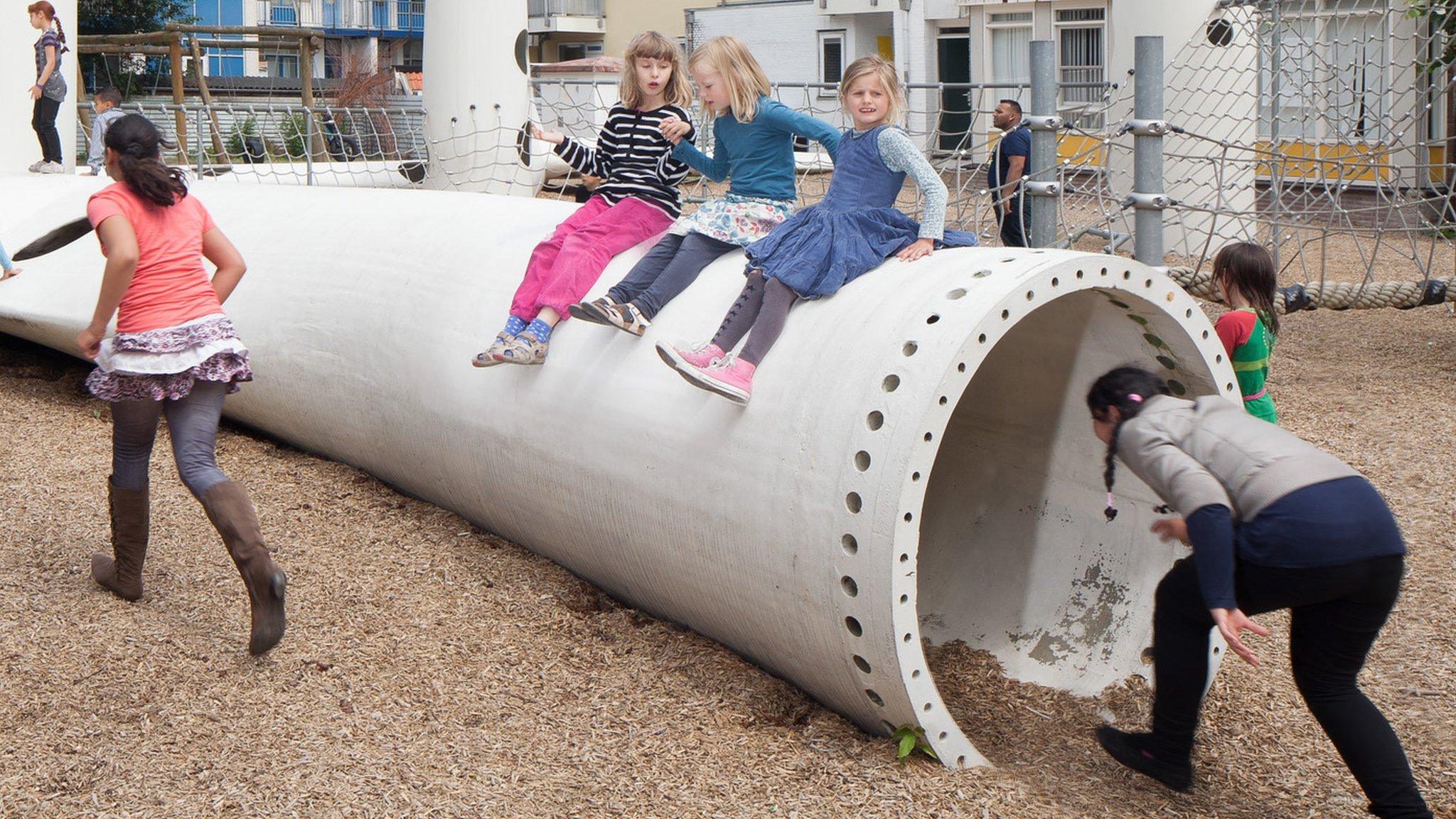Could Scotland's unwanted wind turbines be turned into playparks?
- Published
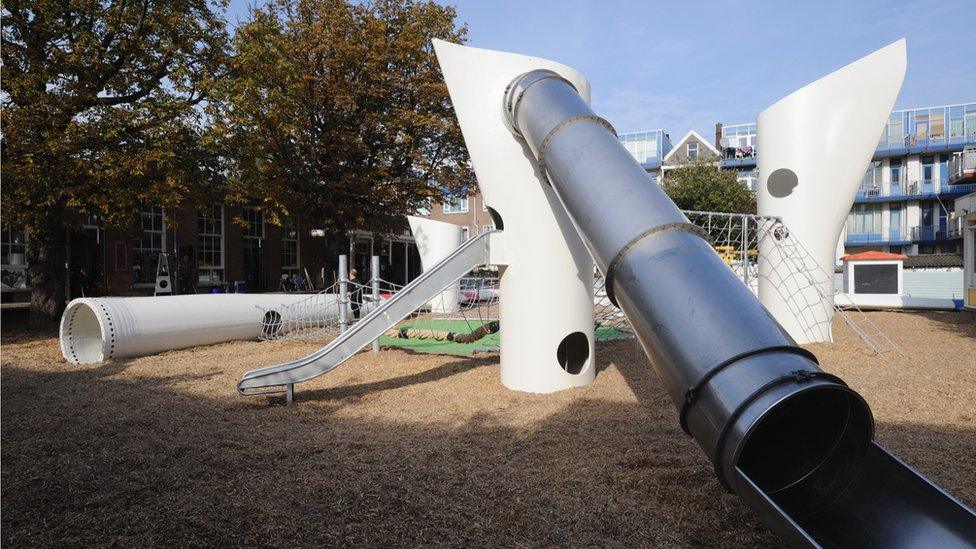
Five former turbine blades have been used to create a playground in Rotterdam
When Windy Standard was built in Dumfries and Galloway in the mid-1990s, it was Scotland's second largest wind farm.
Now it is coming to the end of its functional life and the old turbines are set to be replaced by more powerful machines.
But what happens to the original turbines? Owner Fred Olsen Renewables wants to find creative and sustainable ways to ensure they do not end up in landfill.
Instead, the towers and blades could be turned into playgrounds, climbing walls, skate parks and even pedestrian bridges.
Why do the turbines need to come down?
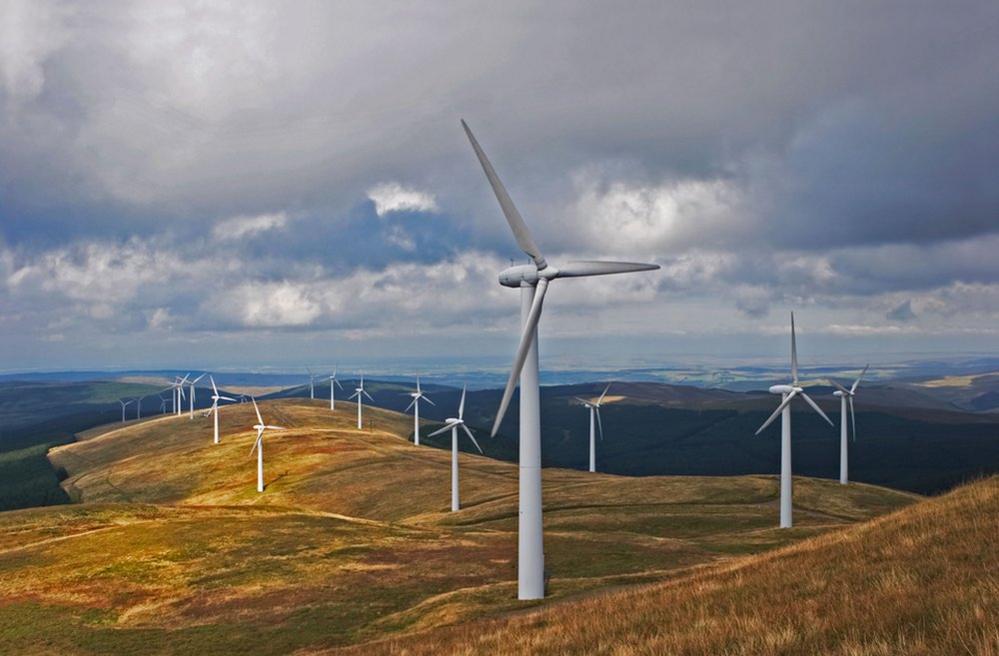
Windy Standard is near Carsphairn in Dumfries and Galloway
The earliest phase of the Windy Standard wind farm - now officially known as Brockloch Rig 1 - has permission to operate in Carsphairn Forest until the end of 2027, after its original 25-year consent was extended.
After that, planning conditions state that all the original turbines should be removed and the land "restored to its former condition".
However, Fred Olsen Renewables hopes to "repower" the site - removing the existing turbines and replacing them with new, more powerful machines, using existing tracks and infrastructure on the hillside.
Each of the 36 turbines that make up the original phase of the wind farm measure 53.5m (175ft) from base to tip and together produce 21.6MW of energy - enough to power about 16,000 homes.
Under the new plans, they would be replaced by no more than nine new turbines.
At up to 200m (656ft) tall, each could be more than three times the height of the existing turbines, but together they have the capacity to generate more than twice as much energy (45MW) and power 38,000 homes.
Can the old turbines be recycled?
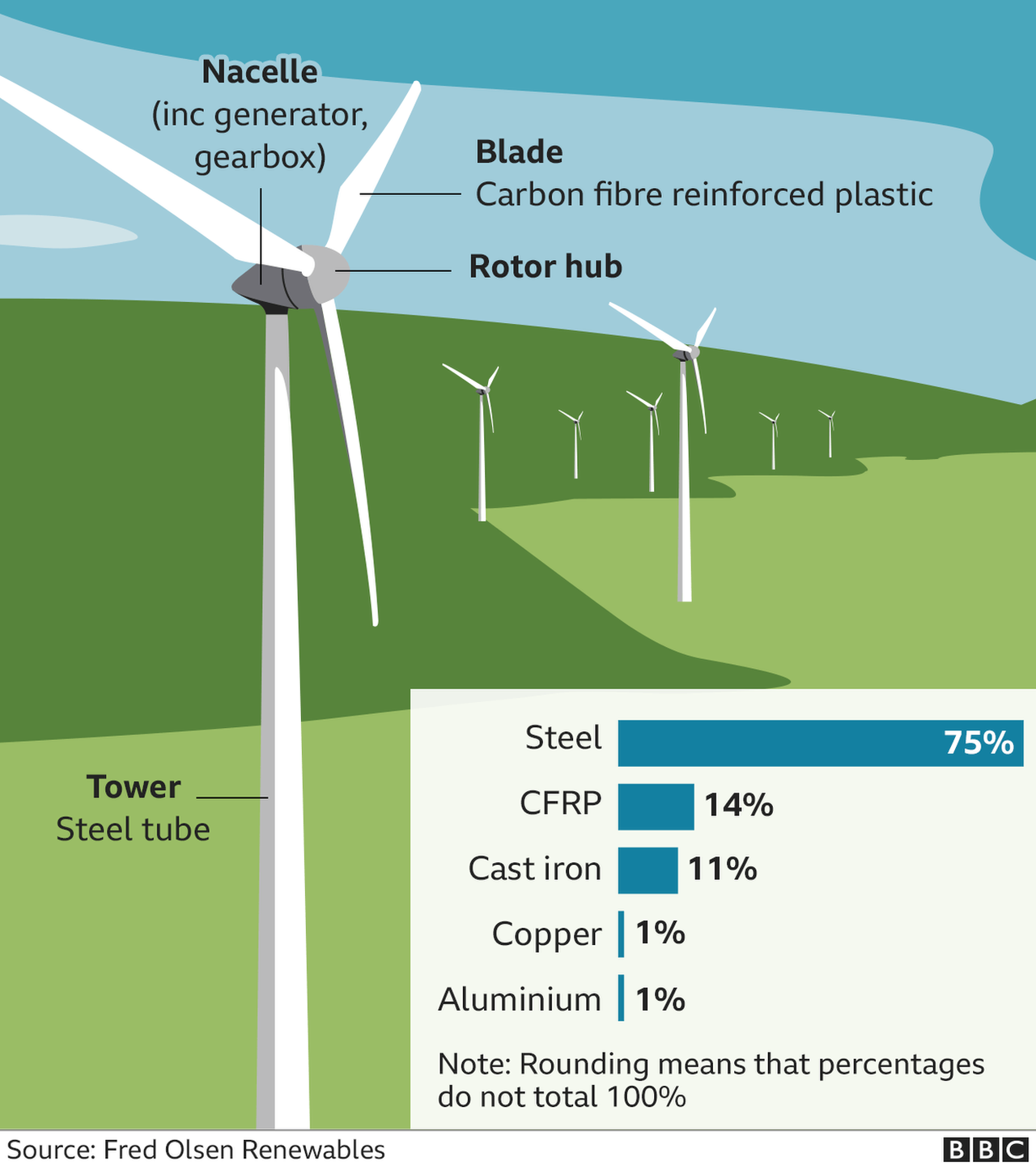

The Windy Standard turbines are made from 75% recyclable material, including the steel tubes that form each tower.
But each tower has three 17m (55ft) blades made from carbon fibre reinforced plastic which cannot easily be recycled.
It means green energy firms such as Fred Olsen Renewables need to find ways to re-use or repurpose the components.
What could happen to the turbines?
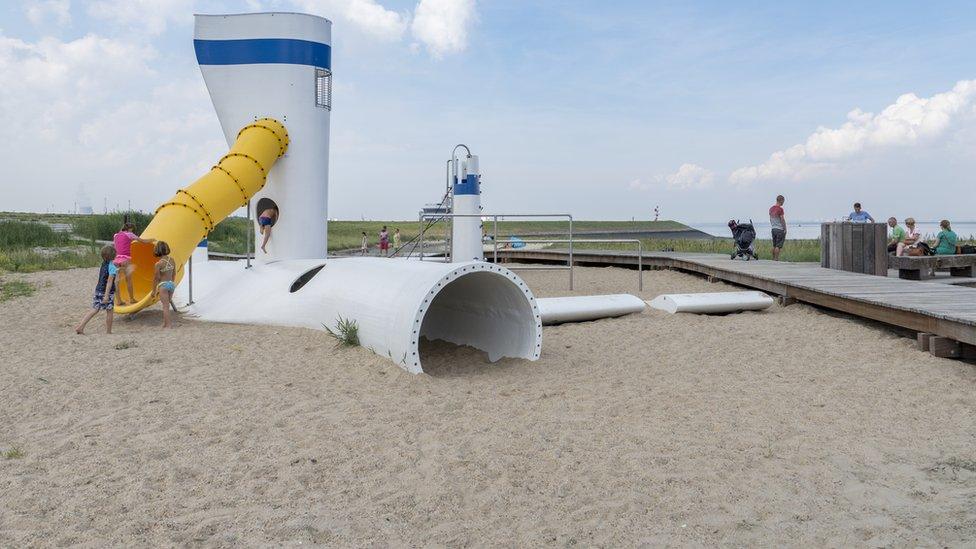
This playground in Terneuzen in the Netherlands is made from discarded wind turbine blades
The firm has drawn up some very early concepts for breathing new life into the Windy Standard turbines, after taking inspiration from some European projects.
In the Netherlands, decommissioned wind turbine blades have been used to build playgrounds in Rotterdam and Terneuzen.
And in the Port of Aalborg - which claims to be Denmark's first carbon neutral port - a bicycle shed has been built from a disused blade.
The Windy Standard proposals - which include using the blades to create public seating, wind breaks and pedestrian bridges - now form the basis of a consultation asking for ideas and opinions. , external
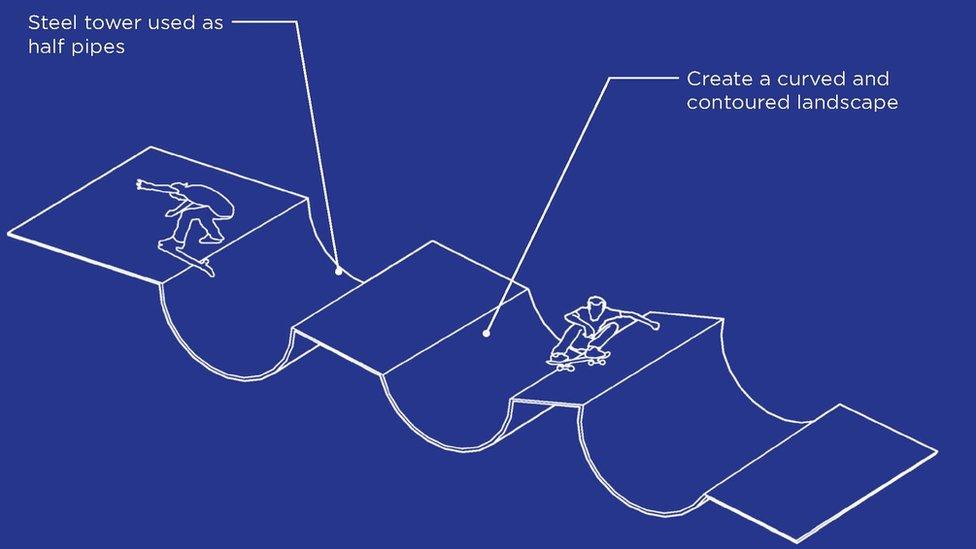
One early idea is to use the turbine towers to create skate parks
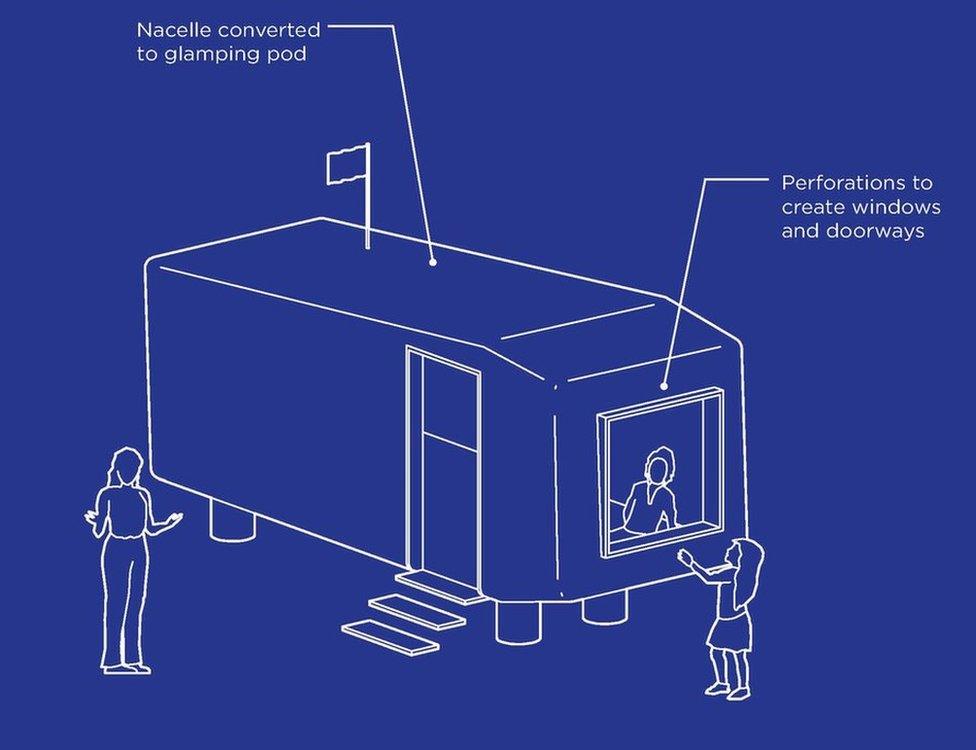
The nacelles could be converted into glamping pods.
The towers could be engineered into skate parks, spiral staircases, wildlife hides, climbing walls, planters, and food troughs for cattle.
And the nacelles - which house the gearboxes and generators - could become glamping pods.
There have also been talks with Dumfries and Galloway College about donating components and parts to help train the turbine technicians of the future.
"The repowering proposals for Windy Standard wind farm provide a unique opportunity to explore how we can re-use the turbines and their components locally," project manager Miles McConville said.
"This will help to address an ongoing industry challenge regarding the recycling of components and help to ensure that wind farms really are part of a truly circular economy."
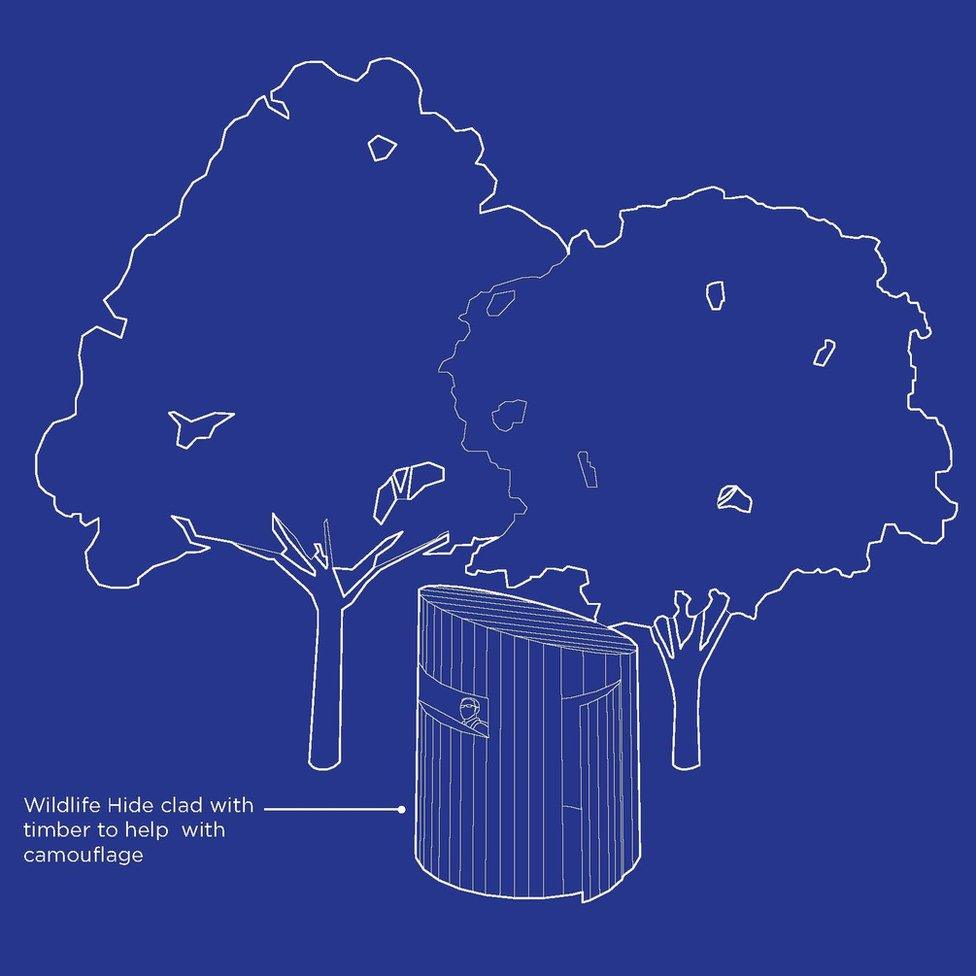
It has been welcomed as an "exciting prospect" by Green MSP Mark Ruskell who is keen to see local communities such as Dalmellington and New Cumnock benefit.
"I think it's a great opportunity really because we are going to see many more wind turbines getting repowered in years to come," he said.
Dumfries and Galloway councillor Rob Davidson suggested the proposals could tie in with the Scottish government's pledge to invest £5m in refurbishing playparks across the country.
What about other wind farms?
As the turbines on Scotland's first commercial wind farms begin to reach the end of their productive lives, finding ways to reuse or recycle turbines in becoming increasingly urgent.
A recent report by Zero Waste Scotland , externalestimated that as many as 5,613 turbines will be decommissioned between 2021 and 2050, generating between 1.25m and 1.4m tonnes of material.
And by 2040 the renewables sector will have to find a way to deal with about 240 out-of-use turbines a year - will they choose to recycle, repurpose, reuse or landfill?
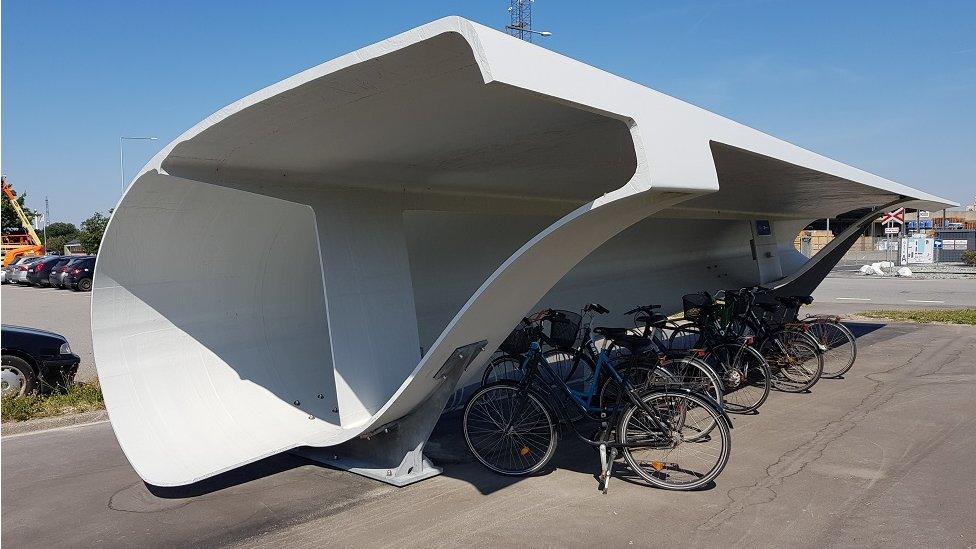
A wind turbine blade has been converted into bicycle storage at the Port of Aalborg in Denmark
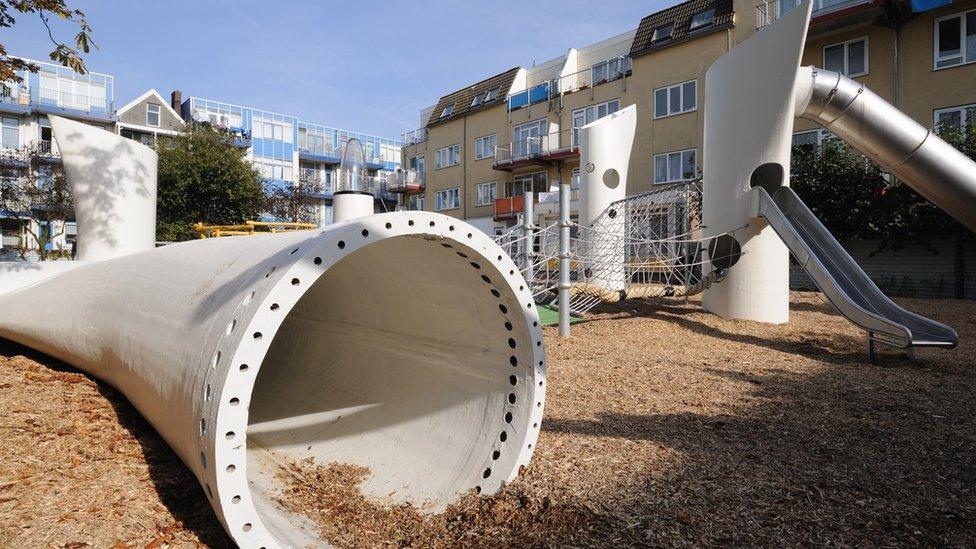
So far, only a handful of turbines have been "retired" in Scotland and data about their disposal is extremely limited.
It is understood that many have been given a second life overseas - there is a thriving global market for second-hand wind turbines, especially in Europe, Asia and Latin America, according to RenewableUK.
Zero Waste Scotland said this was one of the best options for turbines nearing the end of their life in terms of reducing their environmental impact.
It would also like to see the turbines' natural life extended at their current site, or their components refurbished for use as spare parts.
Charlotte Stamper, partner for energy infrastructure at Zero Waste Scotland, welcomed Fred Olsen Renewables' initiative.
"Extending the lifespan of existing materials and resources for as long as possible is vital to protecting our economy against potential resource shortages and the rising cost of materials," she said.
"The work by Fred Olsen on repurposing material from decommissioned wind turbines in Scotland is a fantastic example of our growing circular economy, and we anticipate similar projects in Scotland over the next 10 to 20 years."
- Published7 February 2020
